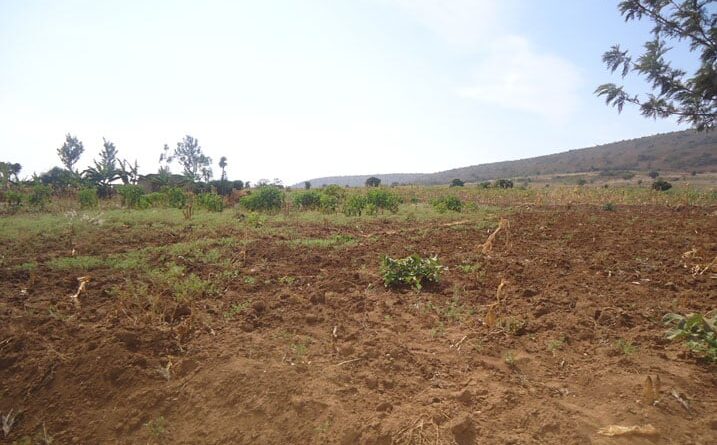Kayonza: Climate change Poses a growing threat to future food security
The prolonged dry season is causing concern among farmers in Kayonza District, located in Rwanda’s Eastern Province, particularly those in sectors such as Murundi, Mwindi, and nearby areas. Farmers report that nearly all their crops have dried up, leaving them with little hope of a harvest.
One local farmer expressed his frustration: “We only had rain in August 2024, which enabled us to plant. But now we have no hope; everything is withered. There was a bit of sporadic rain, but honestly, this season has left us devastated.”
Another added, “A slight breeze comes, and once it’s gone, the sun comes out, scorching the crops. We’re pleading with the government to support us—it’s our only hope.”
Rainfall has been inconsistent, with some areas receiving rain while others get little to none. Farmers describe it as “localized rain” and wonder about the strange pattern this season, as they’ve rarely experienced such intense drought in recent years.
“We planted, but everything dried up in the ground. We have no hope of even seeing cassava, which usually withstands heat, manage to grow. At this time of year, we used to have maize, beans, cassava, sweet potatoes—all of it. Now, as you can see, nothing has survived.”
The last severe drought on this scale was in 2000; otherwise, rainfall was generally reliable. Now we’ve missed the hybrid maize season in the marshlands, leaving us in a tough spot with no harvest expected.”
Some farmers have already planted three times since this planting season began. They received rain in August, allowing them to plant, but any hope of a decent yield has now faded as time passes.
“We planted around September 15, and now it’s November, yet the crops haven’t even germinated,” they said. “This is a frightening hunger. It’s not just this area; it’s affecting many regions, but here, it’s extreme. The climate has changed drastically—you look at the land, and it’s barren. It’s not just farmers; livestock owners are also distressed with no grass or water for the cows.”
People have resorted to feeding bananas to the cows, and just recently, agricultural authorities in the country announced that the expected yield for Season A 2025 would be low, urging farmers to focus on quick-maturing crops.
However, there are other strategies being considered, as highlighted by Dr. Uwamahoro Florence, Deputy Director General of the Rwanda Agriculture and Animal Resources Development Board (RAB).
She stated, “Helping farmers understand that climate change is unpredictable is crucial. So, we need to act quickly in response—when we do get rain, we should plant immediately to ensure crops get enough water early on, enabling them to withstand any sudden weather changes. The government offers crop insurance, and in cases where commercial-scale farming is involved, we should consider insuring these fields to cushion against sudden climate impacts.”
Environmental experts note that climate change has reached critical levels, requiring long-term strategies to manage its effects.
“The only solution is to find new ways to irrigate our crops. The government and individuals alike need to consider collecting and storing water, whether from rain, rivers, or lakes, to use for irrigation. This way, we can keep our crops healthy and secure our food supply,” one expert suggested.
Analyses by various organizations show that the Eastern Province and the Mayaga region will likely continue to face severe impacts from climate change, with these areas especially prone to prolonged dry spells.

